Crime
Mexican cartels are a direct threat to Canada’s public safety, and the future of North American trade
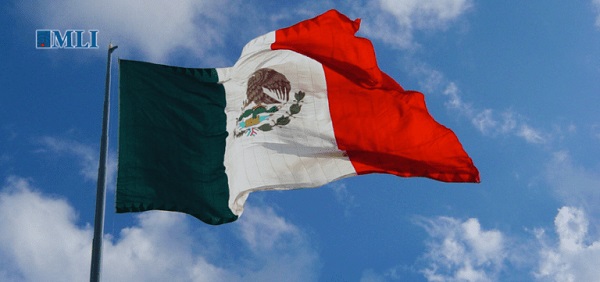
From the Macdonald Laurier Institute
By Gary J. Hale for Inside Policy
RCMP raided a fentanyl ‘superlab’ in Falkland, BC, with ties to a transnational criminal network that spans from Mexico to China.
On October 31, residents of Falkland, BC, were readying their children for a night of Halloween fun. Little did they know that their “quaint, quiet, and low-key little village” was about to make national headlines for all the wrong reasons.
On that day, RCMP announced that it had raided a fentanyl “superlab” of scary proportions near Falkland – one that police called the “largest and most sophisticated” drug operation in Canada. Officers seized nearly half-a-billion-dollars’ worth of illicit materials, including 54 kilograms of finished fentanyl, 390 kilograms of methamphetamine, 35 kilograms of cocaine, 15 kilograms of MDMA, and six kilograms of cannabis” as well as AR-15-style guns, silencers, small explosive devices, body armour, and vast amounts of ammunition.
They also found massive quantities of “precursor chemicals” used to make the drugs. This strongly suggests that the superlab was tied into a transnational criminal network that spans from Mexico to China – one that uses North America’s transportation supply chains to spread its poisonous cargo across Canada and the United States.
The Canada-US-Mexico relationship is comprised of many interests, but the economic benefits of trade between the nations is one of the driving forces that keep these neighbours profitably engaged. The CUSMA trade agreement is the successor to NAFTA and is the strongest example globally of a successful economic co-operation treaty. It benefits all three signatories. This level of interdependence under CUSMA requires all parties to recognize their respective vulnerabilities and attempt to mitigate any threats, risks, or dangers to trade and to the overall relationship. What happens to one affects all the others.
The supply chain, and the transport infrastructure that supports it, affects the balance books of all three. While the supply chain is robust and currently experiences only occasional delays, the different types of transport that make up the supply chain – such as trucks, trains, and sea-going vessels – are extremely vulnerable to disruption or stoppages because of the unchecked violence and crime attributed to the activities of Mexican Transnational Criminal Organizations (TCOs). These cartels operate throughout Mexico, from the Pacific ports to the northern plains at the US-Mexico border.
The sophistication of the Falkland superlab strongly suggests connectivity to multi-national production, transportation, and distribution networks that likely include China (supply of raw products) and Mexico (clandestine laboratory expertise).
For most Canadians, Mexican cartels call to mind the stereotypical villains of TV and movie police dramas. But their power and influence is very real – as is the threat they pose to all three CUSMA nations.
Mexico’s cartels: a deadly and growing threat
Mexican cartels started as drug trafficking organizations (DTOs) in the 1960s. By the late 1990s they had evolved to become transnational enterprises as they expanded their business beyond locally produced drugs (originally marijuana and heroin) to include primarily Colombian cocaine that they transported through Mexico en route to the US and Canada.
Marijuana and the opium poppy are cultivated in Mexico and, in the case of weed, taken to market in raw form. While the cartels required some chemicals sourced from outside Mexico to extract opium from the poppy and convert it into heroin, the large-scale, multi-ton production of synthetic drugs like Methamphetamine and today Fentanyl expanded the demand for sources of precursor chemicals (where the chemical is slightly altered at the molecular level to become the drug) and essential chemicals (chemicals used to extract, process, or clean the drugs.)
The need to acquire cocaine and chemicals internationalized the cartels. Mexican TCO’s now operate on every continent. That presence involves all the critical stages of the criminal business cycle: production, transportation, distribution, and re-capitalization. Some of the money from drug proceeds flow south from Canada and the US back to Mexico to be retained as profits, while other funds are used to keep the enterprise well-funded and operational.
In Mexico, the scope of their activities is economy-wide; they now operate many lines of criminal business. Some directly affect Mexico’s economic security, such as petroleum theft, intellectual property theft (mainly pirated DVDs and CDs), adulterating drinking alcohol, and exploiting public utilities. Others are in “traditional” criminal markets, such as prostitution, extortion, kidnapping, weapons smuggling, migrant smuggling and human trafficking. Organized auto theft has also become another revenue stream.
Criminal Actors
The Cartel de Sinaloa (CDS or Sinaloa Cartel) and the Cartel Jalisco Nueva Generacion (CJNG) are the two principal TCO’s vying for territorial control of Mexico’s air, land, and maritime ports, as well as illegal crossing points. These points on the cartel map are known as “plazas,” and are often between formal ports of entry into the US. By controlling territories crucial for the inbound and outbound movement of drugs, precursors, people, and illegal proceeds, the cartels secretly transport illicit goods and people through commercial supply chains, thus subjecting the transportation segment of legitimate North American trade to the most risk.
That is giving the cartels the power to impair – and even control – the movement of Mexico’s legitimate trade. While largely kept out of the public domain, incidents of forced payment of criminal taxation fees, called “cuotas,” and other similar threats to international business operations are already occurring. For instance, cuotas are being imposed on the transnational business of exporting used cars from the US to Mexico. They’re also being forced on Mexican avocado and lime exporters before the cartels will allow their products to cross the border to the US and international markets. This has crippled that particular trade. Unfortunately, the Mexican government has been slow to react, and the extortion persists throughout Mexico. It is worth repeating – these entirely legitimate goods reach the market only after cartel conditions are met and bribes paid.
The free trade and soft border policies of the US of recent years have allowed cartel operatives to enter that country and work the drug trade with limited consequence. In May, the U.S. Drug Enforcement Administration (DEA) published the National Drug Threat Assessment 2024, where it reported that the Jalisco and Sinaloa cartels operate in all 50 US states and are engaged in armed violence in American cities as they fight for market shares of the sales of Methamphetamine, Fentanyl, and other drugs sourced from Mexico.
The DEA’s findings should sound alarms in Canada. Canada and the US have similar trade and immigration policies, which allow the Mexican cartels to easily enter and control the wholesale component of the drug trade. The long-term effects of the drug trade are the billions of dollars gained that allow for the corruption of government officials. Canada should be on guard: Mexican drug cartels in Canada could begin to not only kill ordinary Canadians by knowingly selling them deadly drugs like Fentanyl – their operatives can also embed themselves in Canadian society, as they have in the US, leading to ordinary citizens on Canadian streets being victimized by the armed violence cartels regularly use to assert their position and power.
Organized crime and Mexican governance
Canada faces these threats directly, but the indirect ones that the cartels present to Mexican governance are no less consequential to Canada in the long term – and likely sooner. Illicit agreements between corrupt Mexican government officials and the cartels assure that the crime organizations retain control of territory and have freedom to operate.
That threat is becoming increasingly existential. Cartel fighters are well disciplined, well equipped and strong enough to challenge Mexico’s military, currently the government’s main tool to fight them. Should the TCOs come to dominate Mexican society or gain decisive influence over government policy, Mexico’s government risks being declared a narco-democracy and the US may come to see the cartels as a threat to national security. That in turn could lead to a US military intervention in Mexico – not an outcome desired by either side.
While that scenario may be considered extreme, it is not as far from reality as many may think. While in many respects the US-Mexico trading relationship remains unchanged, the overall political context has become testy – and could be a real flashpoint for the incoming Trump administration.
Political developments in Mexico have played a role. After his election in 2018, former Mexican President Andrés Manuel López Obrador (commonly referred to his initials, AMLO) demonstrated a disdain for all things North American. This included frequent complaints of US interference or violation of Mexican sovereignty – complaints that were more about keeping Mexican government domestic actions out of the public eye. To retain a shroud of secrecy over government corruption, Mexico under Amlo started in 2022 to limit the activities and numbers of US federal law enforcement agencies operating there, particularly the FBI, DEA, ATF and ICE. These agencies formerly enjoyed a close relationship with the Mexican Federal Police – a force AMLO disbanded and replaced with the National Guard. The AMLO administration reduced the number of US assets and agents in Mexico, particularly singling out the DEA for the most punitive restrictions.
During his administration, AMLO placed the army and navy in charge of all ports of entry and gave them responsibility for all domestic public safety and security by subordinating the Guardia Nacional (GN), or National Guard, to the army. The GN, the only federal law enforcement agency, has been taken over by military officials who are sometimes corrupt and in league with the cartels.
Mexican President Claudia Sheinbaum, who took office in 2024, has continued AMLO’s organizational moves. Sheinbaum comes from the same political party and has so far extended carte blanche to the military, whose administration is opaque and now operates with impunity, under the guise of “national security” and “sovereignty” concerns.
It is expected that Sheinbaum will continue to shield American eyes from Mexico law enforcement and judicial affairs. The fear in the US law enforcement and national security community is that Sheinbaum may even declare DEA non grata, much as then Venezuelan President Hugo Chavez in 2005 and Bolivian President Evo Morales in 2008 did in their countries. Both were anti-American leftists of the same mindset as AMLO and Sheinbaum, who feared detection of their connections to the illegal drug trade.
Sheinbaum has publicly demonstrated disinterest in the consistent application of the rule of law against the TCOs by stating that she will continue the “hugs not bullets” (“abrazos, no balazos”) non-confrontational, non-interventional posture towards organized crime. Agreements with corrupt government officials will allow the cartels to expand their business and to operate with impunity. Through intimidation, bribery, and murder, the cartels affect decision making at the municipal, state, and federal levels of Mexican government. That leverage, while performed outside the public eye, has the potential to negatively affect supply and demand among the three countries at the very least, and at worst, to signal that cartels in Mexico are directly or indirectly involved in the formulation of government security, immigration, drug, and trade policy.
AMLO enacted constitutional changes that will provide Sheinbaum with the powers of a dictator, giving her administration unchecked control of the executive, legislative, and judicial branches of government. As a result, the judiciary in Mexico is in crisis mode with 8 of 11 Supreme Court Justices resigning in October 2024 to protest the unconstitutional disregard for due process that started with AMLO and continues with Sheinbaum thanks to a “voting for judges” law that she and AMLO have rammed into operation without debate. This development portends even more corruption.
Without the existence of an independent judicial system, these institutional changes could give pause to US and Canadian negotiators when it comes time to renew CUSMA in 2026.
Beyond 2025: Mexican organized crime as a threat to the US and Canada, and Greater North American implications
Most worrying, the cartels will be in a yet stronger position to affect and even dictate the pace and volume of legitimate trade between the US and Mexico under Sheinbaum. This makes Mexico the weakest link among the three CUSMA members.
The US and Canada should therefore be concerned about the strength and power of the cartels because the current trajectory could provide them a greater role in Mexico’s performance as a trade partner. Should this trend continue, the US would likely begin to see Mexico through the lens of a threat to critical components of its national security: 1) the public safety of US citizens being killed in epidemic proportions by the drugs produced by citizens of Mexico; 2) the negative impact or increased cost of commerce that supplies goods to the American market; and 3) the CUSMA relationship that sustains the economic strength of all three participating countries.
This worrisome evolution requires proactivity by Canada and the US to insist that Sheinbaum reverse the gains that the cartels have made to influence policy and erode the government’s monopoly on territorial control and the use of violence, and reverse Mexico’s limits on drug enforcement co-operation with what should be its partners to the north. Pressure should also be applied to demand a return to a drug policy model that includes international law enforcement co-operation and a continuation towards the transformation of the Mexican judicial system from a mixed inquisitorial or accusatorial system to an adversarial system that employs the use of juries, witness testimony, oral hearings and trials, and cross-examination of witnesses, as opposed to a system where cartel-influenced elections could dictate judicial outcomes.
The implications of the further development of a Mexico narco-democracy for US-Mexico-Canada relations would be devastating. Co-operation on public safety and security would cease completely, allowing the cartels to take full control of commercial supply lines, significantly reducing trade between the three nations – likely causing the CUSMA trade deal to fracture until governance returned to duly elected civilian officials.
Continental security and Canada’s contribution
The continued success of CUSMA lies with Mexico more than any other country. Should Mexico continue on its path to autocracy, it could upset the trade deal, crucial to the prosperity of all three countries. Canada is not immune from what on the surface may appear to be mostly bilateral, US-Mexico issues, because, regardless of the commodity – whether it’s consumables or manufactured items – the cartels are positioned and empowered to affect imports, exports, trade, and migration throughout North America.
For the foreseeable future, Mexico is not going to voluntarily change its security posture. This enables the cartels to remain persistent threats, especially to trade. Canada and the US need to continue to jointly insist that Mexico take a stronger stance against organized crime and that it take steps to strengthen the judiciary and the rule of law in that country.
Gary J. Hale served 31 years in the Drug Enforcement Administration (DEA), retiring as an executive-level intelligence analyst. In 2010, he was appointed as Drug Policy fellow and Mexico Studies Scholar at the James A. Baker III Institute for Public Policy at Rice University in Houston, Texas.
Crime
DEA Busts Canadian Narco Whose Chinese Supplier Promised to Ship 100 Kilos of Fentanyl Precursors per Month From Vancouver to Los Angeles

A Hollywood-style DEA sting revealed a seamless pipeline from Vancouver brokers to Los Angeles cartel operatives and Australian drug markets.
A senior Indo-Canadian gangster from an ultra-violent British Columbia–based fentanyl trafficking gang with ties to Latin cartels, Chinese Triads, and Hezbollah was taken down in a stunning U.S. government sting that saw a thick-accented Chinese narco casually promise an undercover agent at a Vancouver café that he could ship 100 kilograms of fentanyl precursors per month from Vancouver to Los Angeles, using his trucking company fronted by an Indo-Canadian associate.
The case is detailed in a sprawling DEA probe spanning Turkey, Mexico City, Dubai, Australia, Toronto, Vancouver, Montreal, Hong Kong, and Los Angeles — all captured in a 29-page affidavit with scenes so surreal they could rival a Hollywood script, complete with underworld nicknames like “Burger,” “Queen,” and “Darth Vader.”
At the center is Opinder Singh Sian, a Canadian national and longtime Lower Mainland underworld figure who survived targeted shootings and reportedly leads the Brothers Keepers gang — a key proxy for the Sinaloa cartel in Canada, interoperable with other Latin American cartels, Chinese Communist Party chemical suppliers, and working alongside the Kinahans, a notorious Irish crime family now based in Dubai and closely linked to Hezbollah finance networks.
Sian has been arrested in Arizona and indicted in a sweeping U.S. case that underscores British Columbia’s critical role as a global trafficking hub, bringing together Mexican cartels and Chinese precursor suppliers that operate with near impunity in Vancouver but are increasingly the focus of elite U.S. law enforcement.
The affidavit illustrates how Vancouver’s criminal networks have funneled Chinese precursors into the United States and directly tied them to methamphetamine deals with Mexican gangsters on Los Angeles streets — part of one of the most sophisticated narcotics smuggling conspiracies ever uncovered in North America.
The explosive details are laid out in a newly unsealed affidavit filed by U.S. federal agent Albert Polito in support of a criminal complaint and arrest warrant against Sian. Sworn in 2024, the document offers a rare inside look at how Vancouver’s street-level crews transformed into global brokers bridging continents and more sophisticated criminal syndicates.
Much of the case focuses on methamphetamine shipments from Los Angeles to Australia, orchestrated by Sian, who acted as a proxy for more senior transnational Mexican, Chinese, and Iranian networks, experts say.
“Local gangs like Brothers Keepers aren’t just street crews — they’re frontline proxies in transnational narcoterror networks,” former Canadian intelligence analyst Scott McGregor, an expert on the nexus of Chinese and Iranian threats and foreign interference, commented on X. “Ignoring them as low-level threats misses their role in laundering, logistics, and hybrid warfare.”
But the penultimate finding — likely of high interest in Washington political circles — came from a stunning investigative meeting. In August 2023, the DEA affidavit describes how a shadowy U.S. undercover source known as “Queen” or CS-1 sat across from a man in Vancouver speaking with a thick Chinese accent.
The man, later identified as Peter Peng Zhou, explained in detail how he could “receive fentanyl precursor chemicals from China into Vancouver” and “send 100 kilos of chemicals per month to Los Angeles” using his British Columbia trucking company run by an Indo-Canadian associate.
Zhou allegedly told CS-1 that he had been doing this for about ten years and remembered when these kilograms of chemicals were upwards of $300,000 each. He claimed he knew how to make fentanyl and methamphetamine from the chemicals and emphasized that he would require upfront payment before sending any shipments south to Los Angeles.
Demonstrating how casually Vancouver’s narcos blend into upscale environments, the affidavit describes how Sian first dined at a downtown restaurant with his wife, child, and CS-1 before taking “The Queen” to meet his precursor suppliers at a coffee house.
The Bureau is a reader-supported publication.
To receive new posts and support my work, consider becoming a free or paid subscriber.
That critical meeting, involving Sian, Zhou, and other associates, provided prosecutors with some of the clearest evidence yet of a direct chemical pipeline from Chinese suppliers into North American distribution networks, routed first through Vancouver’s port and trucking infrastructure.
The investigation began in June 2022 when DEA agents in Ankara, Turkey, received intelligence about an opportunity to embed a confidential source into a global trafficking organization. This network needed help moving large shipments of methamphetamine and cocaine from Southern California to Australia — one of the world’s most lucrative drug markets.
DEA agents provided their Ankara counterparts with the phone number of CS-1 — known in global gang networks as “Queen” — who posed as an international logistics coordinator. A Turkish narco, Ibrahim Ozcelik, made initial contact and then passed CS-1’s details to a North American leader: Opinder Singh Sian.
After initial communications, Sian and CS-1 arranged an in-person meeting in Vancouver on February 1, 2023. During this pivotal encounter, Sian claimed to work closely with Irish organized crime — specifically the Kinahan family — as well as Italian groups and other powerful Canadian gangs. Outside Canada, he described sourcing drugs directly from major Mexican and South American cartels, reinforcing his role as a cross-border broker capable of linking multiple criminal networks. He also said he collaborated with a known Turkish drug kingpin, Hakan Arif, highlighting the global scope of his alliances.
While in Vancouver, Sian introduced CS-1 to two male associates. They explained they had about 500 kilograms of cocaine stockpiled and needed help moving it through Los Angeles ports and on to Australia. CS-1 claimed they could facilitate offloading in Los Angeles, repackaging, and onward shipping via container vessel — a scheme designed to tap into Australia’s sky-high wholesale prices, which exceed $200,000 per kilogram.
In March 2023, Sian and CS-1 met again at a restaurant in Manhattan Beach, California, to discuss expanding into methamphetamine smuggling. “Queen” also brought along a DEA undercover agent (“UC-1”), posing as a cousin who worked at the Port of Long Beach and helped move narcotics undetected.
At the meeting, Sian expressed caution, acknowledging they could get in trouble just for meeting. He said his first shipment would be “200,” consistent with earlier encrypted text conversations. UC-1 advised doing fewer but larger shipments to reduce detection risk, emphasizing this was only done for CS-1 as “family.”
Sian pressed for details about the port, probed UC-1’s connections, and mentioned knowing other contacts at the port, the DEA alleges.
By June 2023, the plan to move large methamphetamine shipments into the U.S. began to accelerate. Sian advised that he and his associates would deliver an estimated 500 to 750 kilograms of methamphetamine in separate drops coordinated by his network. On June 13, 2023, Sian created an encrypted chat group using the alias “Cain,” adding “Sticks” (later identified as Sebastian Rollin, a Canadian based in Montreal) and CS-1.
Rollin allegedlly informed CS-1 that his crew would soon deliver 30 pounds of methamphetamine in Southern California as part of the first staged shipment.
Another trafficker known as “El R” or “The R,” later identified as Ruben Chavez Ibarra, entered the operation.
The DEA’s Los Angeles operation revealed gritty street-level deals directly tying Sian’s Indo-Canadian group to “Queen’s” Mexican networks. On July 6, 2023, after days of negotiation, Jorge Orozco-Santana arranged a pick-up in Anaheim using a white Mercedes. He verified the deal with the serial number of a dollar bill token, handed over two plastic bins containing 84.6 kilograms of methamphetamine. The DEA tied this deal to the Montreal network involved in Sian’s encrypted chats.
On July 29, 2023, Sian created a new Threema group chat including a new associate using the moniker “AAA,” later identified as Tien Vai Ty Truong — a dual citizen of Vietnam and Canada, with narco operations in Toronto and Vancouver directed from Hong Kong, according to the DEA affidavit.
The group discussed the 30-pound and 200-pound loads and planned their shipment to Australia. On August 1, Sian asked CS-1 to call an associate named Kular to manage mounting anxiety among Mexican sources over shipment delays.
Meanwhile, CS-1 began discussing fentanyl precursor chemicals with Kular and Sian.
This line of discussion began because Kular had first asked CS-1 whether her networks could receive direct ketamine shipments into Mexico City — a question that suggested to the DEA that Sian’s network likely had direct access to Chinese Communist Party–linked drug suppliers and large-scale chemical manufacturing channels.
In response, the DEA’s High Intensity Drug Trafficking Area Group 48 team prompted “Queen” to pivot and ask about fentanyl precursors. Queen did so, requesting prices on two critical compounds: 1-BOC-4-piperidone and 1-BOC-4-anilinopiperidine. Kular replied that the price would be $225 for the first chemical and $750 for the second, plus $1,000 for shipping.
Shortly after, on July 25, 2023, Sian himself directly contacted Queen, claiming he could supply those same precursors directly and even provide initial samples. He said he could get the chemicals “straight from China,” and proposed shipping them by container into the Port of Long Beach.
To build trust, Sian offered to mail a sample first. On July 29, Queen provided Sian with an undercover DEA-controlled PO box. That same day, Sian confirmed he had sent 20 grams of 1-BOC-4-piperidone and said he would accept cryptocurrency (specifically USDT, also known as Tether) for future large orders. By August 10, Sian informed Queen that the sample shipment had been sent, though it might not arrive until the following week — further confirming the group’s operational capacity to source Chinese precursors and move them into the U.S.
This was the evidence the DEA needed to take the Vancouver port fentanyl sting into high gear.
Returning to Vancouver in August, the headline-making fentanyl meeting came into full context. On August 16, 2023, CS-1 met Sian and his wife and child for lunch in downtown Vancouver. After lunch, Sian drove CS-1 to meet two individuals capable of sending bulk fentanyl precursor chemicals into the United States.
At a coffee shop, Peter Peng Zhou — speaking with a heavy Chinese accent — described how he could receive precursor shipments from China into Vancouver and move 100 kilograms per month to Los Angeles using his British Columbia trucking company.
In an almost absurdly candid aside, Zhou introduced his partner, known as “Burger,” described as a Southeast Asian male who managed “the money side” of the business for him. According to the DEA affidavit, Burger bluntly said he was involved because “his wife was very greedy and wanted him to make more money.”
The pivotal Vancouver coffee meeting also brought in more connections to Mexican operatives in California. During the same meeting, Sian mentioned a contact named Orlando, referring to Orlando Escutia, a Bakersfield, California–based associate. Sian explained that Escutia would be delivering CS-1 an additional 50 kilograms of methamphetamine the following week for shipment to Australia.
Zhou further revealed he could start acquiring a new fentanyl precursor with a CAS number ending in 228, describing it as a “newer and better” chemical for making fentanyl. He elaborated that when he shipped these chemicals by mail, he used a special bag designed to evade law enforcement detection, the DEA alleges.
Later that same day, CS-1 and Sian met with another key figure known as “ABC,” later identified as Kular, at a restaurant in downtown Vancouver. Kular claimed that his own boss, “AAA” — later identified as Tien Truong — was a Chinese national about 55 years old, mainly operating in the Toronto area. According to Kular, Truong’s bosses were ultimately based out of Hong Kong and specialized in moving large quantities of cocaine and methamphetamine around the world.
Crime
‘We’re Going To Lose’: Steve Bannon Warns Withholding Epstein Files Would Doom GOP


From the Daily Caller News Foundation
By Jason Cohen
Former White House adviser Steve Bannon warned on Friday that Republicans would suffer major losses if President Donald Trump’s administration does not move to release documents related to deceased pedophile Jeffrey Epstein’s crimes and associations.
Axios reported on Sunday that a two-page memo showed the Department Of Justice (DOJ) and FBI found no evidence Epstein kept a “client list” or was murdered, but public doubts have continued. Bannon said on “Bannon’s War Room” that failure to release information would lead to the dissipation of one-tenth of the Make America Great Again (MAGA) movement and significant losses for the Republican Party in the 2026 midterms and the 2028 presidential election.
Dear Readers:
As a nonprofit, we are dependent on the generosity of our readers.
Please consider making a small donation of any amount here.
Thank you!
“It’s not about just a pedophile ring and all that, it’s about who governs us, right? And that’s why it’s not going to go away … For this to go away, you’re going to lose 10% of the MAGA movement,” Bannon said. “If we lose 10% of the MAGA movement right now, we’re going to lose 40 seats in ’26, we’re going to lose the [presidency]. They don’t even have to steal it, which they’re going to try to do in ’28, because they’re going to sit there and they go, ‘They’ve disheartened the hardest-core populist nationalists’ — that’s always been who governs us.”
Bannon also demanded the publication of all the Epstein documents on “Bannon’s War Room” Thursday. He called on the DOJ to go to court and push for the release of the documents or for Trump to appoint a special counsel to manage the publication.
Epstein was arrested in 2019 and charged with sex trafficking. Shortly after, he was found dead in his New York Metropolitan Correctional Center cell shortly after. Officials asserted that he hanged himself in his cell.
However, Epstein’s death has sparked years of theories because of the malfunctioning of prison cameras, along with guards admitting to falsifying documents about checking on the then-inmate. The DOJ inspector general later confirmed that multiple surveillance cameras outside of his cell were inoperable, while others captured the common area outside his door.
Both Bannon and Daily Caller News Foundation co-founder Tucker Carlson have speculated that Epstein had connections to intelligence agencies.
Former Labor Secretary Alex Acosta allegedly indicated that Epstein was tied to intelligence, according to Vicky Ward in The Daily Beast.
-

 Frontier Centre for Public Policy2 days ago
Frontier Centre for Public Policy2 days agoCanada’s New Border Bill Spies On You, Not The Bad Guys
-
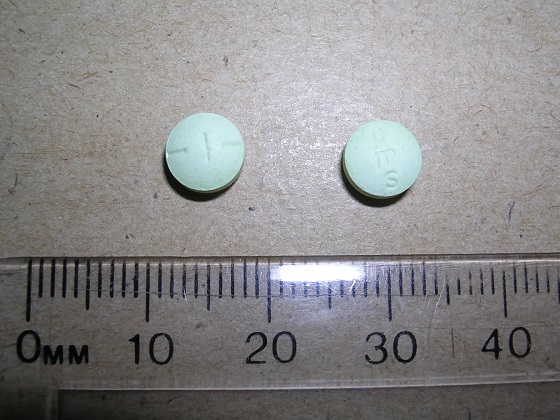
 Addictions1 day ago
Addictions1 day agoWhy B.C.’s new witnessed dosing guidelines are built to fail
-
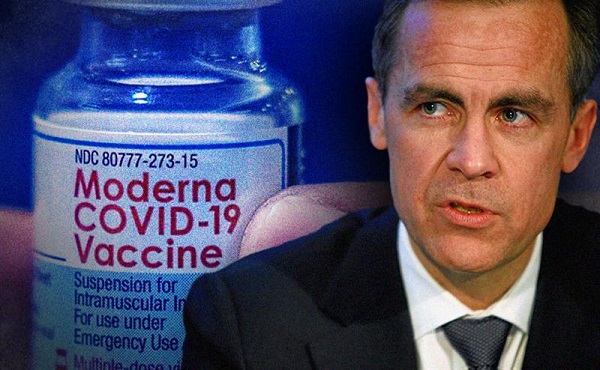
 Business1 day ago
Business1 day agoCarney Liberals quietly award Pfizer, Moderna nearly $400 million for new COVID shot contracts
-
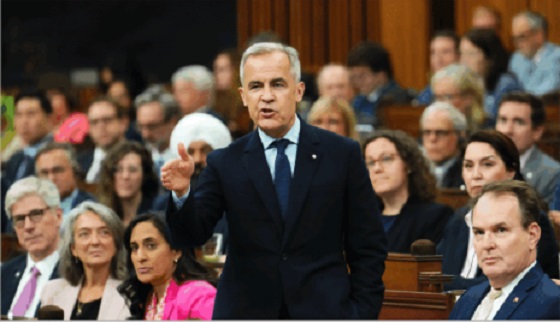
 Business1 day ago
Business1 day agoMark Carney’s Fiscal Fantasy Will Bankrupt Canada
-

 Energy2 days ago
Energy2 days agoCNN’s Shock Climate Polling Data Reinforces Trump’s Energy Agenda
-

 Opinion1 day ago
Opinion1 day agoCharity Campaigns vs. Charity Donations
-

 COVID-191 day ago
COVID-191 day agoTrump DOJ dismisses charges against doctor who issued fake COVID passports
-
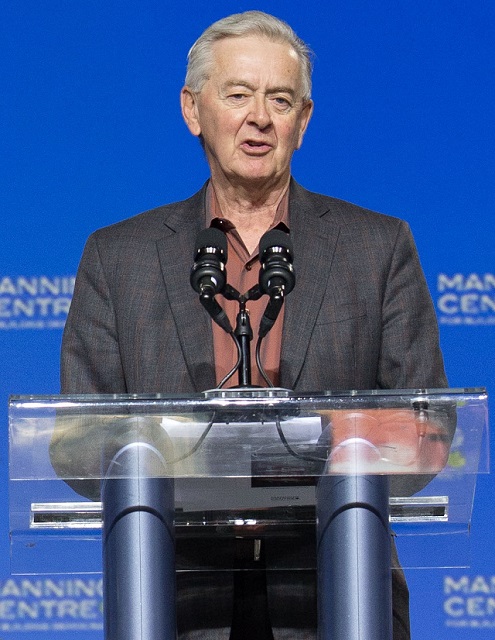
 Opinion1 day ago
Opinion1 day agoPreston Manning: Three Wise Men from the East, Again







